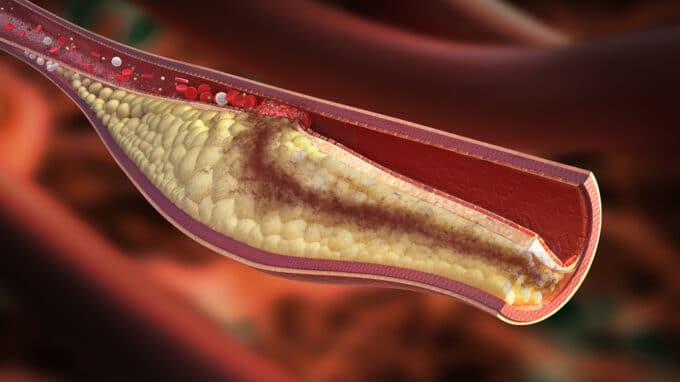High cholesterol can affect both female and male fertility. Therefore, it is important to lower cholesterol levels to a healthy level. Scientists have now succeeded in reversing infertility in sterile mice by reducing HDL cholesterol with a bacterial protein in a promising development that provides further evidence of a link between high cholesterol and female infertility. The researchers worked with a protein called serum opacity factor, which lowerd cholesterol levels by over 40 percent in three hours. This is a promising development because approximately one in five women of childbearing age will not conceive after a year.
High Cholesterol can Affect Fertility
Cholesterol is a waxy, fat-like substance found in all cells of the body. It is used to make a number of substances, including hormones and vitamin D. High blood cholesterol does not usually cause any signs or symptoms, but it can increase your risk of heart disease. Previous research has found that high cholesterol can affect fertility in couples trying to conceive. Couples where each partner had high cholesterol levels took the longest time to achieve pregnancy.
The researchers calculated the likelihood that a couple would achieve pregnancy using a statistical measure called the Fecundability Odds Ratio (FOR). The measure estimates couples’ likelihood of pregnancy each cycle based on their serum cholesterol levels. The researchers found that, on average, couples in which the woman did not become pregnant during the study period had the highest free cholesterol levels. The study results were published online in JCEM, The Journal of Clinical Endocrinology and Metabolism.
Certain Protein Has the Potential to Lower Cholesterol Levels
In a new study, scientists from the Houston Methodist Hospital worked with a protein called serum opacity factor that has unique properties. Their experiments showed that the serum opacity factor lowered cholesterol levels by over 40 percent in three hours. While this protein’s primary function is to increase bacterial colonization, it also alters the structure of cholesterol-carrying high-density lipoproteins, or HDLs, making it easier for the liver to eliminate the excess cholesterol that prevents conception.
The researchers also noted that the dramatic effect of serum opacity factor on HDL could be used as a potential alternative to statins, which are currently the gold standard for lowering cholesterol in people with atherosclerosis. Known as “good cholesterol,” HDL carries excess cholesterol from various tissues to the liver for breakdown, thereby lowering cholesterol levels. However, when HDL dysfunction is present, lipid metabolism is altered which could then be harmful, just like its LDL or low-density lipoprotein counterpart. Often referred to as “bad cholesterol,” LDL carries cholesterol from the liver to other tissues, with high levels causing accumulation and disease.
Both HDLs and LDLs contain a mixture of free and esterified cholesterol, and free cholesterol is known to be toxic to many tissues. According to the researchers, any dysfunction of HDL can also be a risk factor for several diseases. To study HDL dysfunction, the researchers used preclinical mouse models with abnormally high levels of HDL cholesterol circulating in their bloodstream. While this made them ideal for studying atherosclerosis, they observed that these mice were also completely sterile.
Serum Opacity Factor as a Treatment Option in Idiopathic Infertility
When the researchers fed the sterile mice a lipid-lowering drug, as predicted, both LDL and HDL cholesterol levels fell, and the animals temporarily became fertile. Motivated by these results, they turned their attention to the bacterial protein serum opacity factor, which is known to be highly selective for HDL. The serum opacity factor is best known in the context of bacterial streptococcal infections, where it serves as a virulence factor. However, it was also discovered that this protein only responds to HDL and not to LDL or other lipoproteins. The researchers hypothesized that administering serum opacity factor to these mice could also potentially help restore their fertility. For their next set of experiments, the team engineered an adeno-associated virus to deliver the serum opacity factor gene to mice lacking HDL receptors that had high blood cholesterol levels. When the gene was expressed and the bacterial protein was produced, the animals’ HDL cholesterol dropped significantly and their fertility was restored.
Based on these promising preclinical results, the researchers next plan to conduct a clinical trial to examine lipid levels in women undergoing treatment for idiopathic infertility where the underlying causes are not fully understood. If these patients have high HDL levels, serum opacity factor could be a future line of treatment. The results were published in the Journal of Lipid Research of the American Society for Biochemistry and Molecular Biology.





